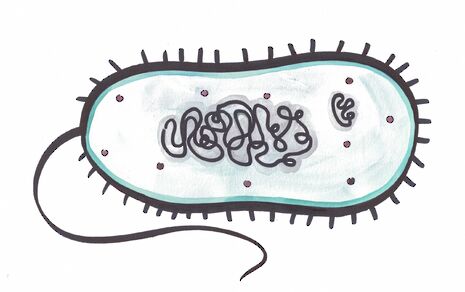Engineering meets life sciences in synthetic biology
Manipulation of model organisms is a dream for many a scientist and synthetic biology has shown great advances in achieving this in the past two decades. Alex van der Wateren recounts some of the field’s achievements and explains how synthetic biological tools can propel research in areas as diverse as diagnostics and production of biomaterials.

Synthetic biology aims to make biology easier to engineer. The field encompasses “the design and construction of new biological parts, devices and systems and the re-design of existing, natural biological systems for useful purposes.” It is an interdisciplinary branch of biology and engineering and combines various specialisms such as biotechnology, genetic engineering, systems biology, and electrical engineering. Research in synthetic biology attempts to describe biological regulation schemes with mathematical models and to apply electrical circuit analogies to biological pathways.
First steps

The first synthetic gene networks were realised by designing and assembling basic transcriptional regulatory elements, controlling whether genes are on or off, to create a biological equivalent of electronic memory storage (a genetic toggle switch) and timekeeping (a repressilator). The toggle switch is a synthetic, bistable gene-regulatory network composed of two repressors (off) and two constitutive promoters (on) arranged in a mutually inhibitory network (Figure 1). Transient introduction of a chemical or thermal induction causes switching between the stable states.
The genetic toggle switch is an example of a transcriptional biosensor because environment responsive promoters (on switches) are linked to engineered gene circuits resulting in transcriptional changes (which result in different behaviour of the organism). Many other biosensors act on translation (the step from messenger RNA to protein) but there are also post-translational biosensors such as protein receptors, which can be designed at the level of molecular interactions.
From ideas to practice

BioBricks™ are DNA sequences, each with a specific function. They can be combined into larger synthetic biological circuits to implement more complex functions. Together these sequences make up the Registry of Standard Biological Parts. An example of combining different functions into one organism is E. chromi created by the iGEM team of the University of Cambridge in 2009. iGEM is a competition held each year in which teams of students are challenged to study whether integrated biological systems can efficiently be built from standard biological parts. The Cambridge team developed a sensitivity tuner to tune a biosensor (the bacterium E. coli) to practically relevant concentrations of different compounds (such as varying concentrations of a chemical poisonous to humans). They also created a colour generator so when switched on, the bacterium would produce pigment visible to the naked eye. The team has offered some very exciting potential future developments for E. chromi in diagnoses of diseases and detection of environmental pollutants (Figure 2).
Biomaterials is another area of research in which synthetic biology has facilitated great progress. These materials are scaffolds that can perform useful functions such as promoting cell attachment, which is of great importance in the development of artificial bone and tooth as well as in tissue engineering. The best scaffold for tissue engineering is the extracellular matrix (ECM) of the target tissue. Using ECM has practical pitfalls, which is why traditional materials have been modified to mimic properties of natural materials to create more economic bioactive materials. Another interesting avenue to create scaffolding is exploiting certain virus capsids (the protein shell of a virus), as these are easily produced and contain only protein and nucleic acid (the genetic information of the virus). As viruses evolve quickly in vivo, capsid proteins are more tolerant of mutational change than many other proteins.
These are just a few examples of new developments facilitated by synthetic biological approaches. Artificial organs, stronger and more biologically compatible material, as well as more advanced and cheaper diagnostic tools, are just a few of the numerous applications we can expect to see in the near future
 Comment / Plastic pubs: the problem with Cambridge alehouses 5 January 2026
Comment / Plastic pubs: the problem with Cambridge alehouses 5 January 2026 News / Cambridge businesses concerned infrastructure delays will hurt growth5 January 2026
News / Cambridge businesses concerned infrastructure delays will hurt growth5 January 2026 News / New movement ‘Cambridge is Chopped’ launched to fight against hate crime7 January 2026
News / New movement ‘Cambridge is Chopped’ launched to fight against hate crime7 January 2026 News / AstraZeneca sues for £32 million over faulty construction at Cambridge Campus31 December 2025
News / AstraZeneca sues for £32 million over faulty construction at Cambridge Campus31 December 2025 News / Uni-linked firms rank among Cambridgeshire’s largest7 January 2026
News / Uni-linked firms rank among Cambridgeshire’s largest7 January 2026








